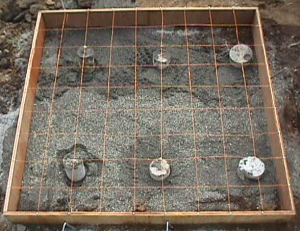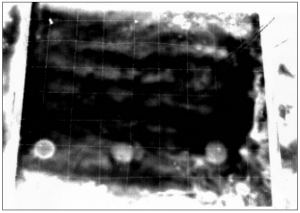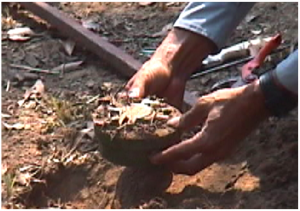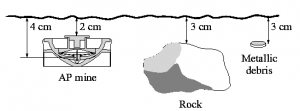- Home
- Research
- Landmine detection and removal technology
- Underground buried object exploration
Underground buried object exploration experiment using infrared imaging
This measurement technology proposes an IR camera system that performs the task of removing mines for humanitarian purposes. Because of the high risks involved, it is necessary to conduct mine detection from the greatest possible distance. By using infrared (IR) cameras, scattered mines can be detected from remote locations. For mines buried in the ground, detection is possible if the peripheral temperature difference is sufficiently large between the ground and the mine device. Tests with trial mines were used to study the detection characteristics of IR cameras for images and various technologies for collecting and processing image data in real time for optimum mine detection.

Measurement result by IR camera
A simulated land mine (plastic ingot) was buried before the experiment. The experiment was conducted 3 min after the ground surface cooled. Using an 8–12 micrometer infrared camera, the simulated land mine was detected after burial.
Mine detection using an IR sensor and mine demining
Landmine detection using a composite sensor
The measurement results of both detectors are judged in a complex manner to ascertain the burial position of the buried land mine.
The IR camera system that performs the task of removing mines for humanitarian purposes. Because of the high risks involved, it is necessary to conduct mine detection from the most remote endeavoring. By making use of infrared ray (IR) cameras, scattered mines can be detected from remote locations. In the case of mines buried in the ground, detection is possible if the peripheral temperature difference is large enough between the ground and mine weapon. As one of the world’s advanced nations in sensor technology, Japan should promote surveys and studies for detecting mines safely by using its advanced remote sensing technologies.
Detection result by GPR sensor
Detection result by metal detector
















